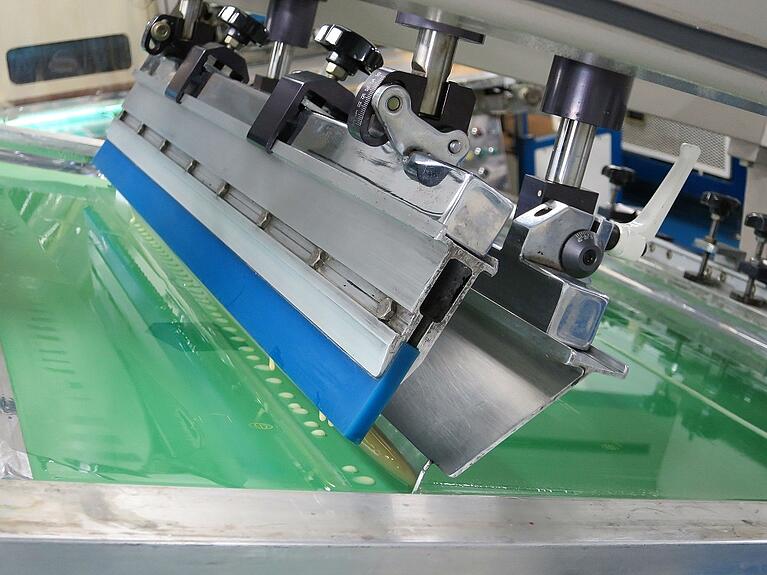One would think that with all these new digital printing techniques, screen printing will soon become obsolete. However, at CMI, we’ve identified screen printing as the leading technology for printed electronics.
As opposed to graphic printing, where color mixing can be tricky, functional printing requires controlling with precision the geometric dimensions of the electrical circuits and components to be printed. Among other things, electrical elements are characterized by their length, width and thickness and screen printing is one of the only printing techniques that gives you full control of the three.
There are many misconceptions about screen printing. A common assumption is that the ink is “pushed through” the screen. The reality is that the ink is transferred from the stencil to the substrate. Screen printing is a three-step process: first, the squeegee fills the mesh openings with ink, then the next squeegee stroke transfers the ink from the mesh to the substrate and finally, the screen springs back, leaving the ink behind.
Screen printing has been around in one form or another for hundreds of years. T-shirt and apparel printing are a common application, thanks to a simple, versatile and low investment process. However, there are always two sides to a coin, and what may look like a very straightforward process for one industry can become very complex for another.
Various factors contribute to the resolution and thickness of the print. They are commonly divided into three groups: the screen, the machine, and the ink.
The screen is composed of the frame, the mesh, and the stencil. For high resolution, we are using stainless steel mesh made of very small size thread (20microns) and capillary film.
Printing thickness can be adjusted with the choice of the mesh and the thickness of the emulsion.
Besides the screen, the machine settings make all the difference. The off-contact (the distance between the screen mesh and the substrate) is often overlooked as a critical setting. The proper off-contact will allow the mesh to peel away from the substrate after printing.
Pressure is the necessary evil. When screen printing was a manual process it was impossible to put too much pressure because it was limited by human strength. Nowadays, automated equipment operators tend to apply excessive pressure, spreading the ink and causing uneven prints.
Squeegee angle, speed, and rubber hardness are all equally important and should not be neglected. Like similar processes which started manually operated, screen printing is highly dependent on operator skills and experience.
Inks are composed of binder, solvent, additive and functional filler.
Common electrically conductive filler materials include silver, carbon, and more recently nanoparticles.
Thixotropy is an essential property for good printability. Basically, it measures the change of viscosity with the increase of shear rate. When the operator pours the ink on the screen the viscosity does not change and the ink does not flow through the mesh opening. With the squeegee motion the viscosity drops and the ink can freely flow through the screen. Once transferred on the substrate the viscosity will go up again and the ink will “freeze”.
CMI is recognized in South East Asia as an expert of functional screen-printing. Customers from US and Europe also rely on CMI for their challenging printed electronics projects. For more information visit our website, http://www.centralmidori.com/ or contact centralmidori@central-midori.com.sg.

